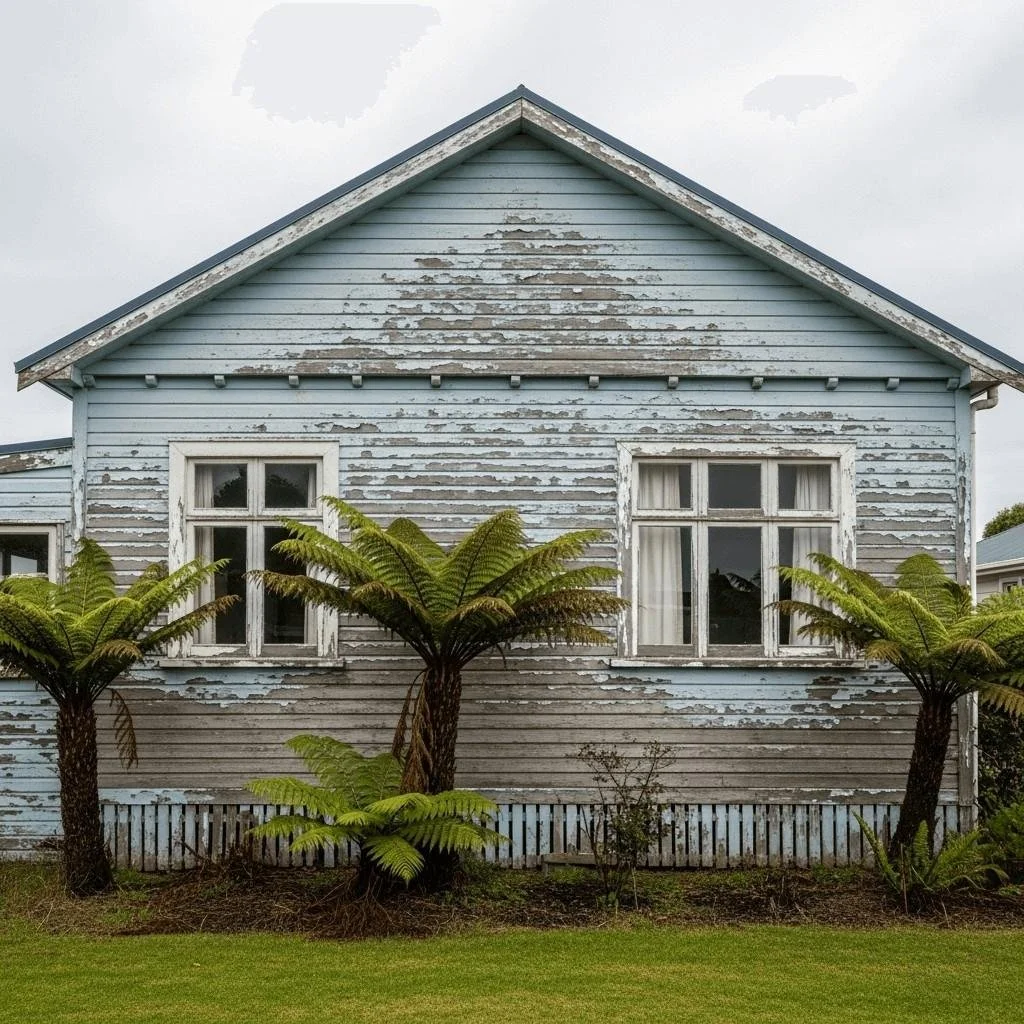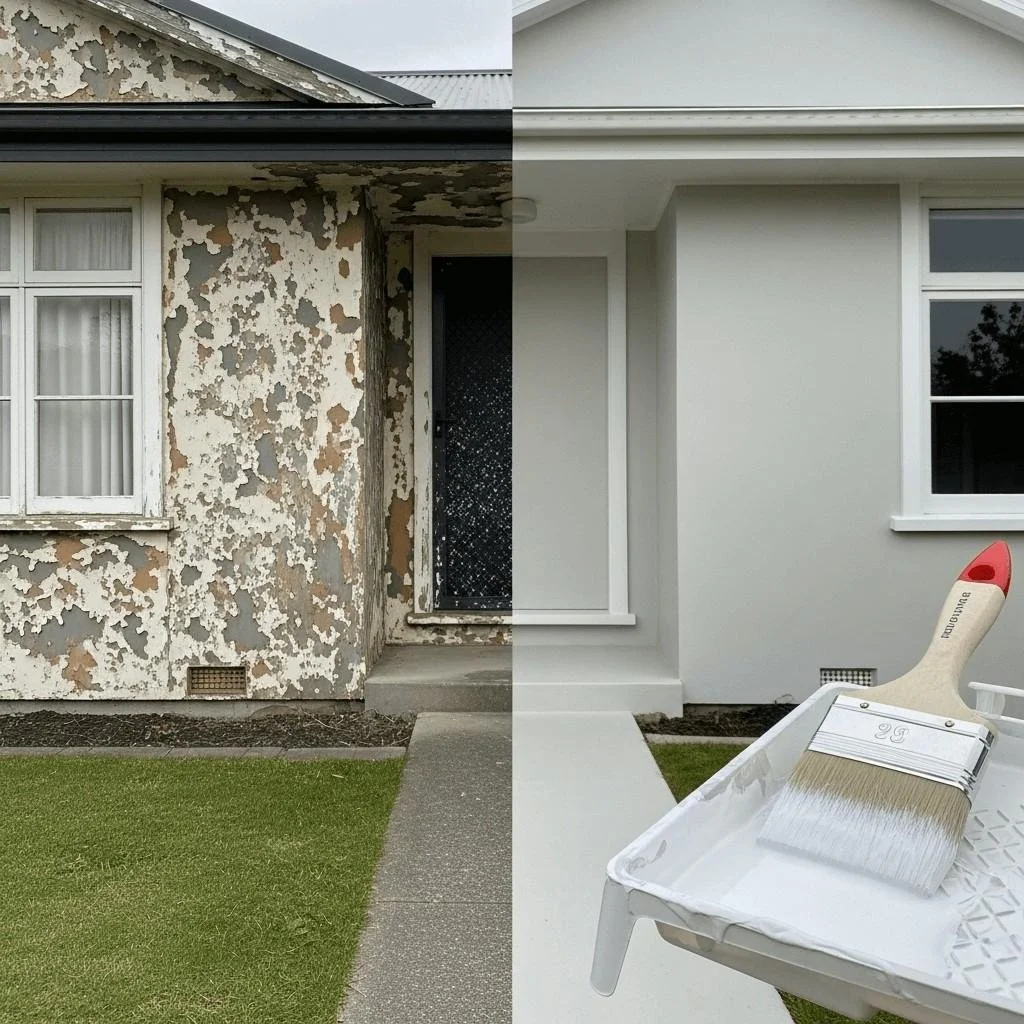What Really Causes Exterior Paint to Bubble and Blister
What causes exterior paint to bubble is primarily moisture beneath the paint layer and exposure to extreme heat. Understanding these factors is crucial for preventing bubbling and ensuring a long-lasting finish.
- Introduction
- The Role of Surface Preparation
- Environmental Factors Affecting Paint
- Why Choose Reuben Ellis Decorating for What Causes Exterior Paint Issues
- Frequently Asked Questions
- What causes exterior paint to bubble?
- How can I prevent paint from blistering?
- Can environmental factors in Christchurch affect my paint?
- What is the best time of year to paint outside?
- Does old paint need to be completely removed before repainting?
- How does primer help prevent bubbling?
- What tools are essential for painting preparation?
- Why is bubbling more common in humid climates?
Ensuring your property maintains its curb appeal often involves regular upkeep of exterior surfaces. One frequent challenge is addressing what causes exterior paint to bubble. This phenomenon, often characterised by unsightly blisters on painted surfaces, can significantly diminish the aesthetic value of a building. Here, we delve into the factors contributing to paint bubbling and offer insights into preventative measures, drawing on expertise from Reuben Ellis Decorating in Christchurch, New Zealand.
Understanding Bubbling
Bubbling occurs when the adhesion between the paint film and the underlying surface is compromised by moisture or air trapped underneath. When exposed to heat, the moisture or air expands, creating blisters on the paint surface. These blisters not only detract from the appearance but can also lead to further deterioration if left unaddressed.
Primary Causes: Moisture and Heat
Two primary culprits are involved in causing exterior paint to blister: moisture and excessive heat. Moisture can seep into the substrate through small cracks or porous surfaces, while excessive heat, often from direct sunlight, causes the moisture to rise to the surface, forming bubbles. Quality preparation and execution play a pivotal role in mitigating these issues.
Preventative Strategies
Protective measures are essential in preventing paint from bubbling. Firstly, ensure surfaces are dry and clear of contaminants before painting. Using high-quality, breathable paint allows trapped moisture to escape without causing bubbling. Consult with professionals like those at Reuben Ellis Decorating for expert advice tailored to the climate of Christchurch, New Zealand.
Despite the complications caused by bubbling, understanding its origins assists in maintaining the longevity and appeal of exterior surfaces. By implementing strategic measures, one can significantly lessen the occurrence of this common painting challenge.
The Role of Surface Preparation
Ensuring that surfaces are adequately prepped is perhaps the most vital step in safeguarding against the frustrating phenomenon of exterior paint bubbling and blistering. The initial surface conditions set the stage for the paint's performance, with many problems traceable back to this foundational phase. This section delves into the intricacies of surface preparation, highlighting its importance and the common pitfalls that can lead to unsightly bubbling.
Cleaning and Degreasing
One of the primary steps in surface preparation is thorough cleaning. Any dirt, grease, or oils present on the surface can create a barrier between the substrate and the paint, preventing proper adhesion. Over time, exposure to elements in Christchurch, such as rain and salt-laden winds, can exacerbate these issues, leading to bubbling and peeling. Thus, effective cleaning with appropriate solutions ensures a clean surface, ready for the next stages of preparation.
Removing Old Paint
Applying fresh paint over unsound existing coatings is a recipe for disaster. Flaking or chipping paint layers often trap moisture underneath, which, upon heating, transforms into steam, causing the new layer to blister. In Christchurch, where weather conditions can be unpredictable, stripping back to a solid substrate is essential. Sanding and scraping are common methods for ensuring a clean base, allowing new paint to adhere securely, and decreasing the chances of blistering over time.
Applying Primer
Proper priming is often overlooked but remains indispensable in establishing a perfect bond between the surface and the paint. A good quality primer not only enhances paint adhesion but also seals porous surfaces, reducing the risk of moisture penetration. This step is crucial, particularly in climates prone to humidity and fluctuating temperatures. By applying a primer, you form a protective shield that supports the durability and appearance of the paint, effectively minimising the risk of bubbling.
By understanding and implementing these steps, you can significantly enhance the life and aesthetics of your exterior paintwork. Next, we will explore the impact of environmental factors on paint performance, furthering your knowledge on maintaining a pristine exterior.
Environmental Factors Affecting Paint
While surface preparation is undeniably critical in ensuring a smooth and lasting finish, environmental conditions play an equally important role in paint performance. Understanding how different weather conditions and climate variables affect exterior paint can help prevent bubbling and blistering.
Weather Conditions
Weather is one of the main environmental influences on exterior paint. Extreme temperatures and sudden changes can cause paint to expand and contract, leading to cracking or bubbling. For instance, painting in high humidity can trap moisture beneath the surface, which may subsequently lead to blistering once the sun heats the surface. It's crucial to choose the right day for painting, ideally when the weather is mild with low humidity and consistent temperatures.
Climate and Location
The climate and geographical location significantly impact the choice of paint and its application process. Locations with salty air, like coastal areas similar to Christchurch, can lead to paint degradation as salt can act as an abrasive on painted surfaces. High UV exposure, common in this region, can also cause premature aging of paint layers, leading to increased bubbling and peeling. Selecting paints specially formulated for high UV resistance and considering protective coatings can mitigate these effects.
Best Practices to Mitigate Environmental Effects
Preemptive measures can be taken to protect paint jobs in areas susceptible to adverse environmental conditions. First, choose high-quality, weather-resistant paints designed for specific conditions, such as those providing UV and moisture protection. Consider the use of sealers and topcoats that add an extra layer of defense against harsh elements. It is also beneficial to conduct seasonal maintenance checks to address any minor issues before they worsen. Being proactive and informed in your approach can significantly extend the life and look of exterior paint jobs.
Skilled painters adept at evaluating environmental conditions, such as those at Reuben Ellis Decorating, can offer bespoke solutions that cater to Christchurch's unique climate challenges. With their expertise, achieving a durable and impressive finish is attainable, ensuring your property stands out beautifully.
This leads us to the next section, where we discuss why Reuben Ellis Decorating is your best option for tackling what causes exterior paint problems, providing unparalleled expertise and service quality.
Why Choose Reuben Ellis Decorating for Exterior Painting Excellence
When it comes to addressing and resolving exterior paint bubbling issues, Reuben Ellis Decorating stands out as the premier choice for exterior painting in Christchurch, New Zealand. We pride ourselves on combining local expertise with unmatched professionalism in the painting industry. With years of experience and a trusted reputation built on client satisfaction, we guarantee that our services exceed expectations.
Experienced Local Experts
Reuben Ellis Decorating boasts a team of seasoned professionals who have a deep understanding of the unique challenges that the local climate in Christchurch presents. Our knowledge of the area's specific environmental conditions enables us to apply the best techniques and materials to prevent and resolve paint issues, such as bubbling and blistering. This expertise is crucial in delivering high-quality results that last, giving you peace of mind with every project.
What Sets Us Apart
Our commitment to quality and client satisfaction sets us apart from other painting services. We employ the latest technologies and eco-friendly materials, ensuring that each project is handled with the utmost care and precision. Moreover, our dedication to clear communication and transparency with clients fosters trust and reliability. This approach not only tackles immediate paint issues but also helps to prevent future occurrences, making us the go-to exterior painting service in Christchurch for all your exterior needs.
At Reuben Ellis Decorating, we also value continuous improvement and innovation, which is reflected in the positive feedback we consistently receive from our satisfied clients. This keeps us motivated to maintain the high standards that our reputation is built upon.
Call 027 777 9543If you’re ready to experience top-notch painting services that not only address what causes exterior paint to bubble and blister but also provide enduring results, contact Reuben Ellis Decorating today.
Our next section will delve into frequently asked questions about exterior paint issues, providing valuable insights and solutions to common concerns you might have.
Frequently Asked Questions
What causes exterior paint to bubble?
Exterior paint bubbles primarily due to moisture trapped beneath the paint surface. This can occur due to poor surface preparation, humidity, or painting over a wet substrate.
How can I prevent paint from blistering?
To prevent blistering, ensure the surface is dry and clean before painting. Use a high-quality primer, apply paint under suitable weather conditions, and allow adequate drying time between coats.
Can environmental factors in Christchurch affect my paint?
Yes, Christchurch's weather can impact paint longevity. High humidity, frequent rain, and temperature fluctuations can contribute to paint issues if not properly managed.
What is the best time of year to paint outside?
The ideal time is during mild, dry weather. Avoid painting in the rain or during extremely hot conditions, as these can affect paint adhesion and drying.
Does old paint need to be completely removed before repainting?
Old paint should be removed if it is peeling or bubbling. However, if the previous paint is in good condition, a thorough cleaning and sanding may suffice.
How does primer help prevent bubbling?
Primer seals the surface, providing a stable base for paint. It helps prevent moisture from seeping through, reducing the risk of bubbling and peeling.
What tools are essential for painting preparation?
Essential tools include scrapers for old paint removal, sandpaper for smoothing, and brushes or rollers for primer application, ensuring a smooth surface.
Why is bubbling more common in humid climates?
In humid climates, moisture is more likely to be present in the substrate or air, leading to trapped moisture under paint layers, and causing bubbles to form.


